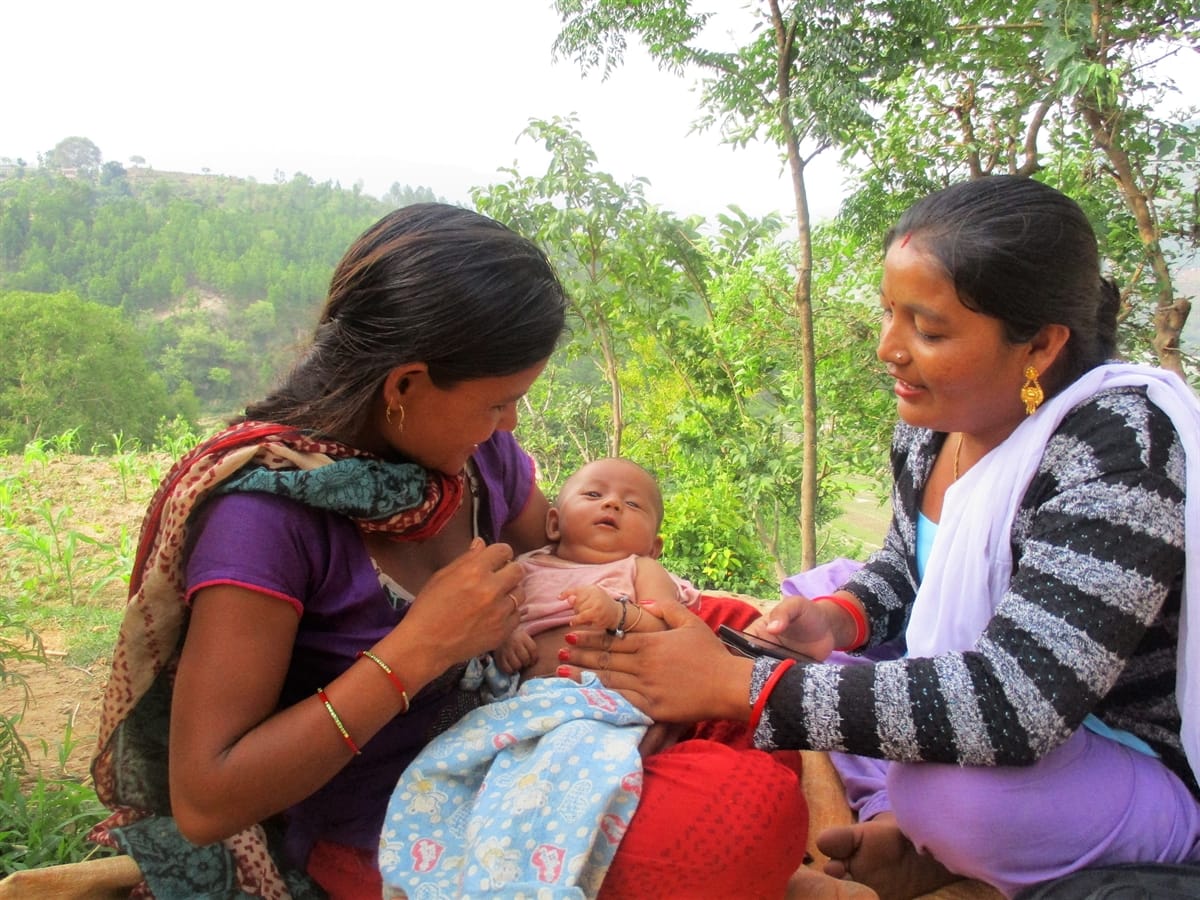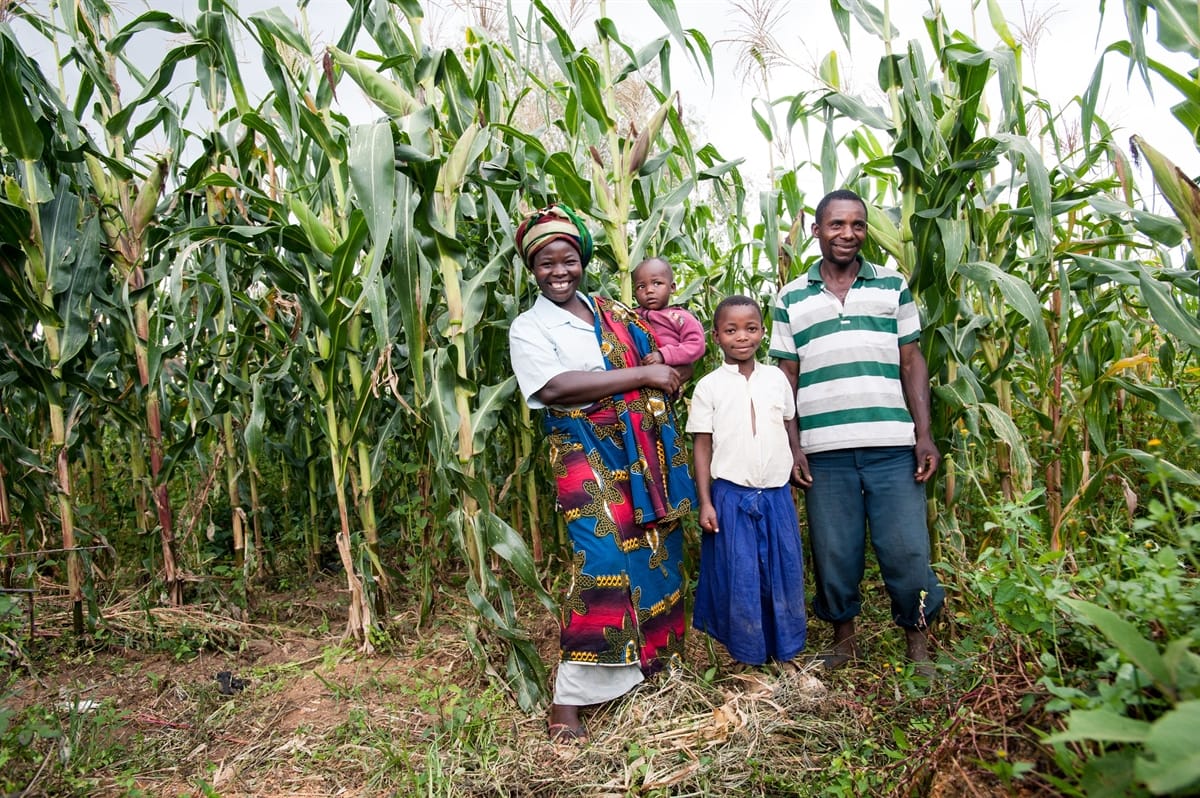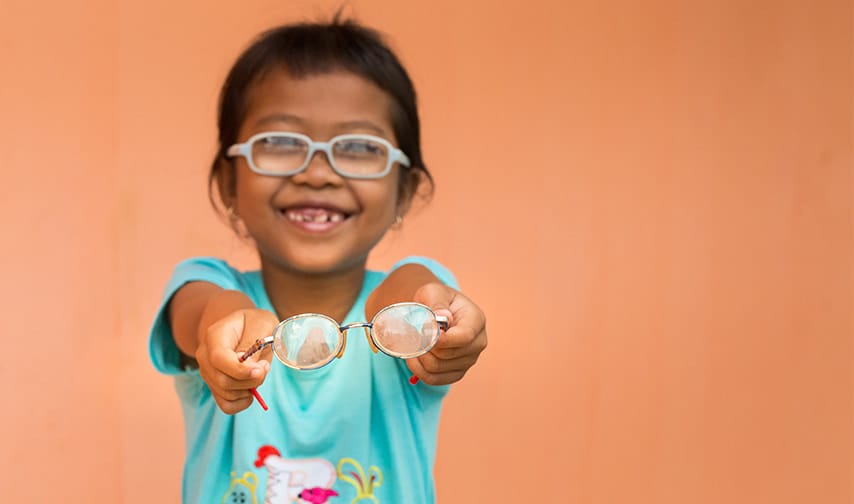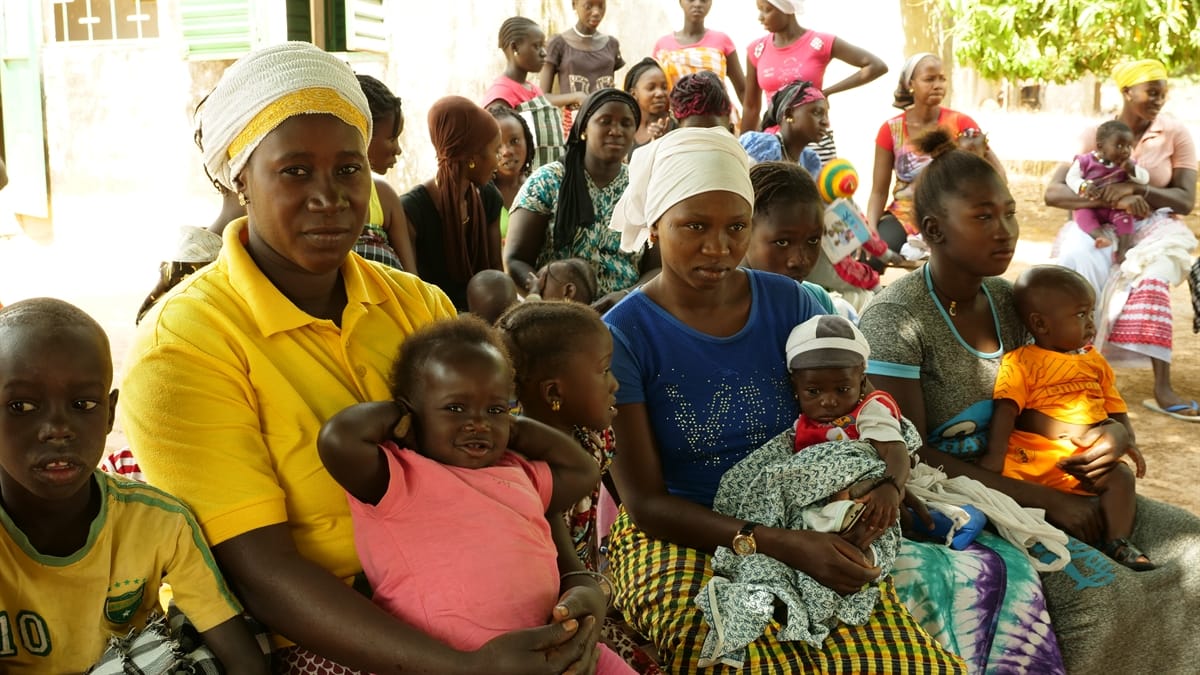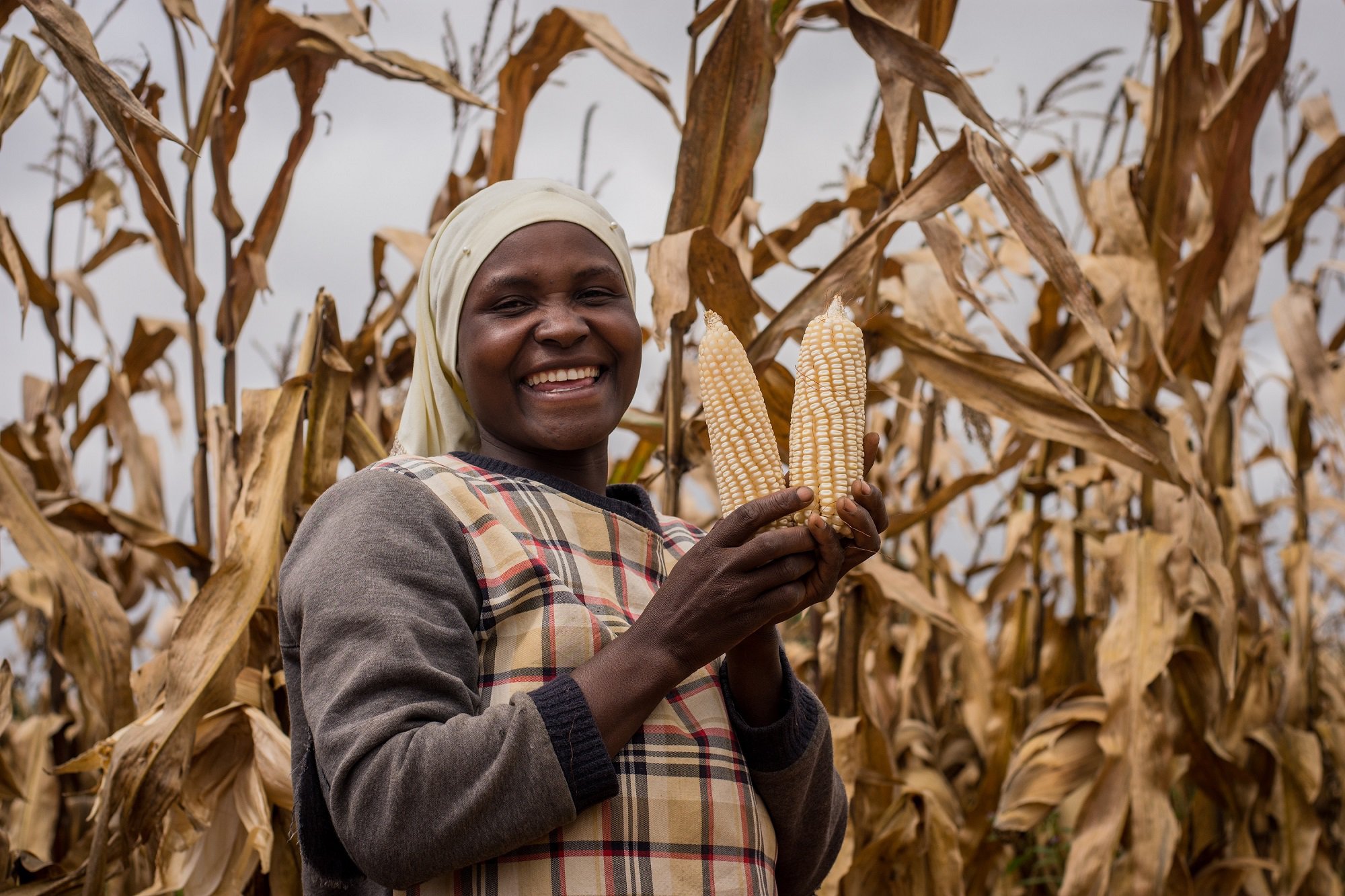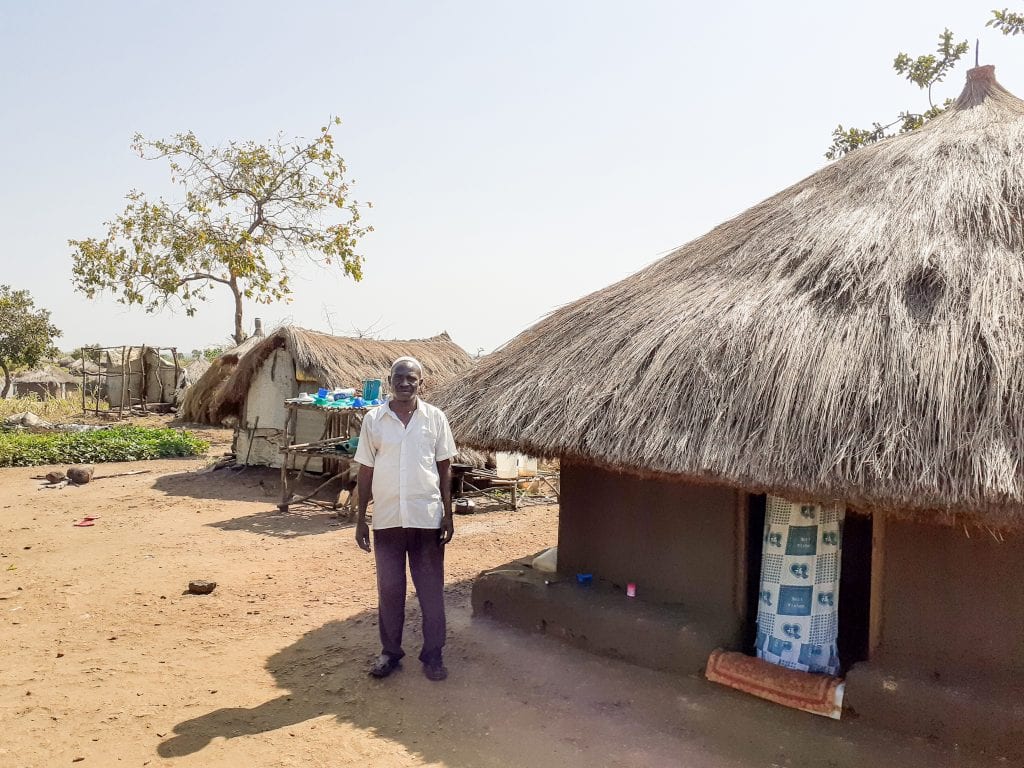Fall in Nepal is full of lights, with some of the most vibrant displays of color, in celebration of Dasain and Tihar. In villages, rice, flour, sand, and flowers are used to make “rangoli”, decorated patterns on the floor of homes that are intended to welcome various Hindu gods and goddesses. Celebrations are important for a country that is still recovering from natural disasters and a 10-year civil conflict that left many government health posts and primary care facilities in disarray.
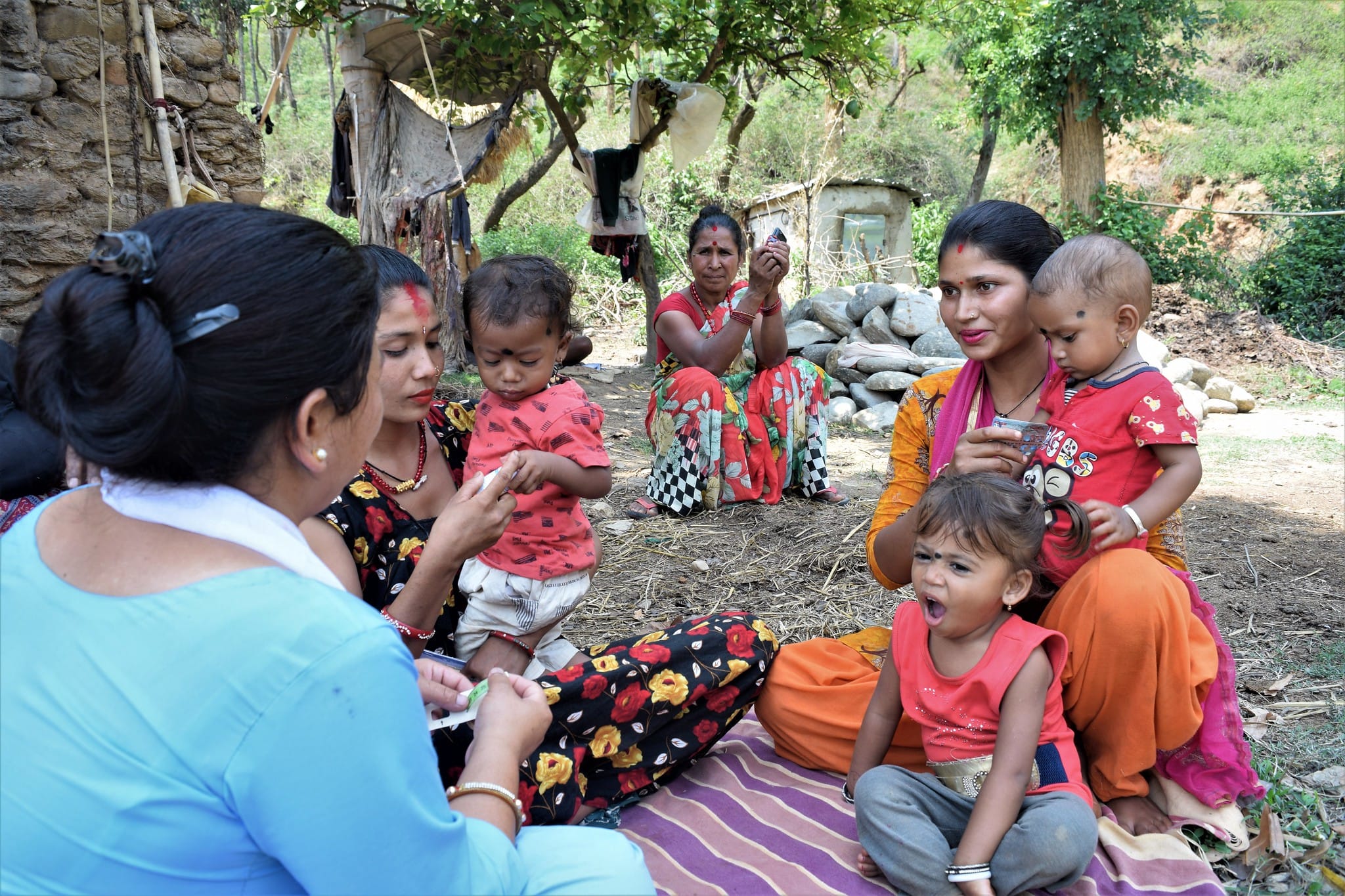
Community Health Worker Radhika Shah provides nutrition counseling to new mom to encourage healthy breastfeeding supply.
This is the context that many of our patients live in.
Meet 19-year old Kamala Thami, who is pregnant for the first time. Kamala lives in Dolakha, one of the epicenters of the 2015 earthquakes. She is very excited to be pregnant. She says, “This is my new birth after surviving the disastrous earthquake. I am very happy that Community Health Worker (CHW) Sangita Khadka is visiting us for regular check ups.”
Kamala shares that many women give birth to children at their homes out of tradition. There is a lack of education on safe delivery and some children die of preventable deaths, as a result. One woman, Parbati Thami, who comes from an agricultural family, has had two children die within three months of being born. Some expecting mothers continue to bear heavy loads, even through their pregnancy, but with more counseling, they know to take more caution.
With the expansion of the community healthcare program in their village, many women have stopped delivering at home and now deliver at Charikot Hospital.
New mothers are also mentored and encouraged to breastfeed exclusively for the first six months, and to eat nutritious food to produce enough milk for the baby. In the past, many mothers believed that “wei wei”, an instant noodle that was packaged and sold in nearby stores, was more nutritious than steamed vegetables and meat that is locally available.
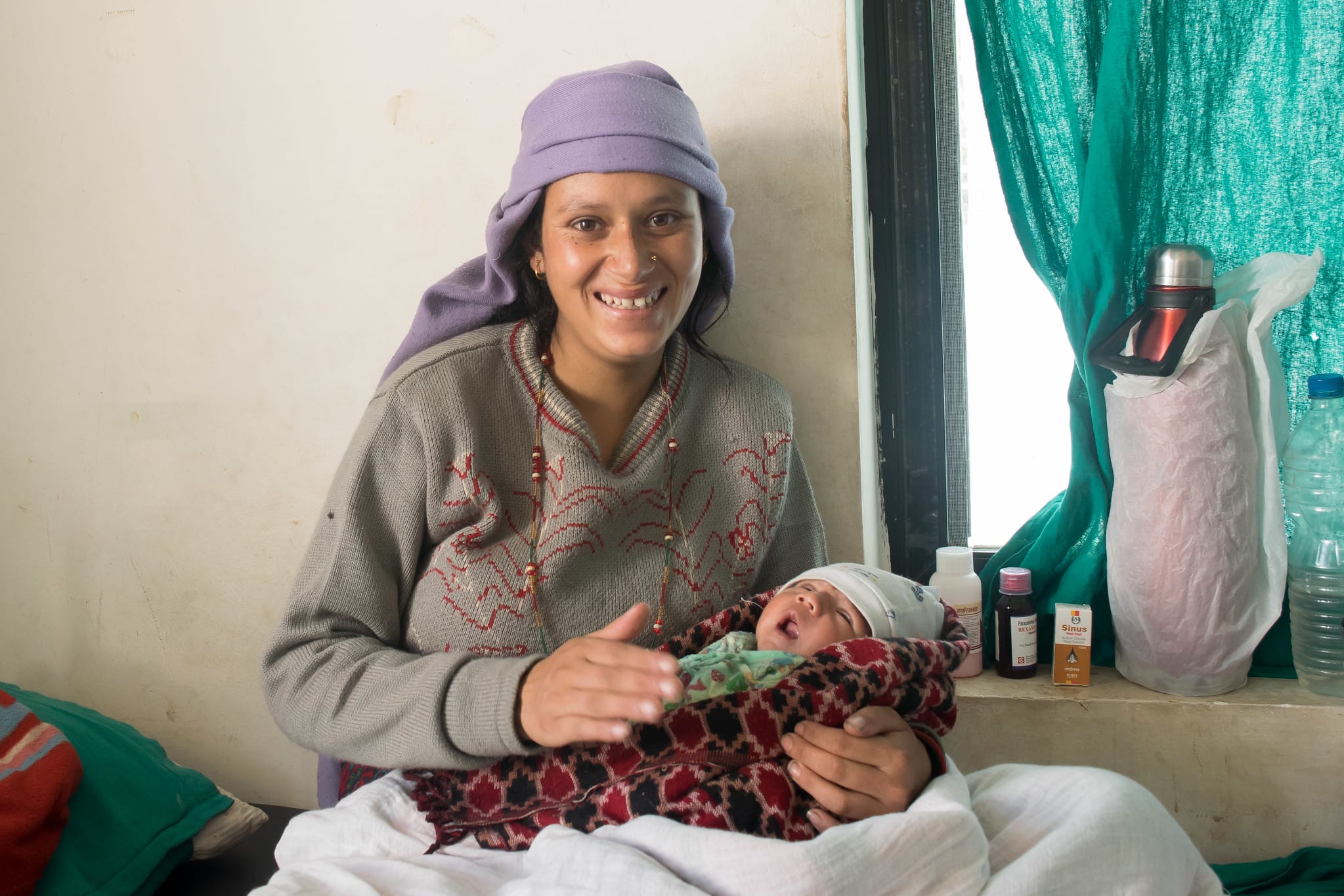
Radhika was relieved to bring her 21-day-old baby to Charikot hospital for breathing problems, even though it was a 2 hour jeep ride to get there.
Through one-on-one consultations and group antenatal meetings, pregnant women like Kamala are able to access a wider support system, which can be life-saving in these hilly parts, where quality care often requires walking five hours, up and down mountains, to the nearest facility.
Patients like Kamala can now access preventative services in their homes, and plan for a facility birth well in advance. Institutional birth rate, a proxy for maternal mortality, has risen significantly in the catchment areas where Possible has worked the longest, from 30% to now 95%. In addition, CHWs are actively monitoring newborns through two years, and mortality rates have also gone down where CHWs have had a longitudinal presence.
Our vision is for our integrated healthcare model, that tracks and monitors reproductive, maternal, newborn and child health, to be adopted and scaled by the government, and for the learnings to be relevant to such health efforts in other low-resource settings.
